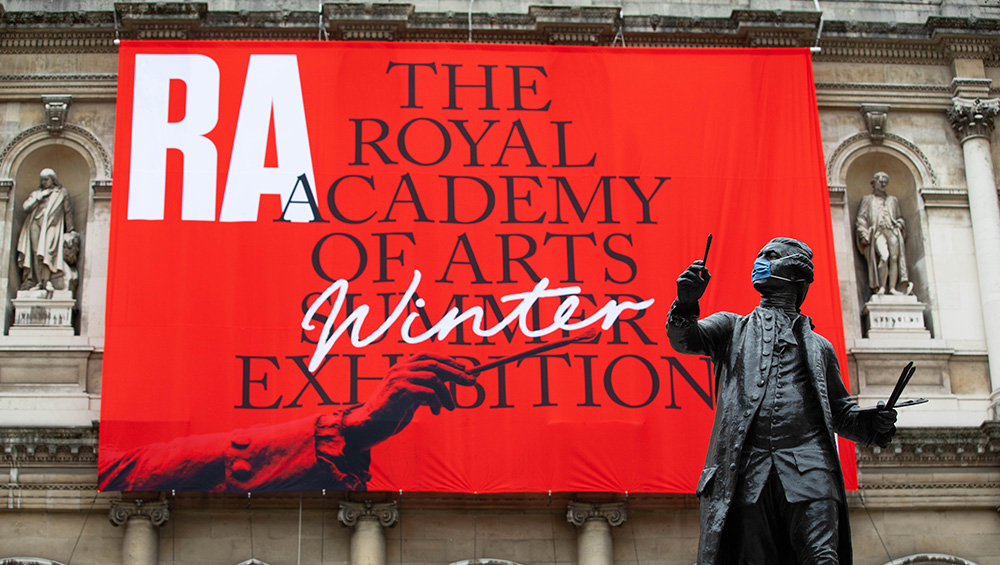
Royal Academy of Arts Summer Exhibition, London, 6 October 2020 – 3 January 2021.
Royal Academy of Arts, London
6 October 2020 – 3 January 2021
In line with government guidance, the Royal Academy of Arts will be closed from 6pm on Wednesday 4 November. We will reopen as soon as lockdown restrictions are lifted.
by BETH WILLIAMSON
This year’s Summer Exhibition, for the first time in its 252-year history, takes place across the autumn and winter months: since 1769, even through the war years, the exhibition continued uninterrupted in its customary summer slot. This year, proceedings were delayed because of Covid-19 and, while the cautious reopening to the public from 16 July has been welcomed, social distancing dictates much reduced visitor numbers at any one time. This is similar to other galleries or museums at the present time, but the Summer Exhibition is a very different show from most. The throng of visitors that normally fills the Royal Academy’s gallery spaces, the buzz of potential buyers, fellow artists and press has, of necessity, been massively reduced. The atmosphere may be muted compared with the usual frenzied crowds, but while there is something lost in that experience, there is also something gained.
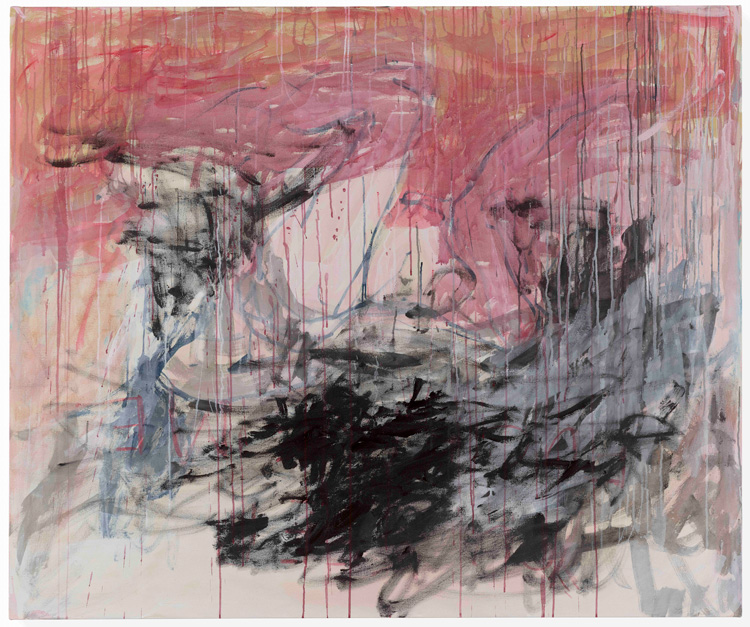
Tracey Emin, The Ship. Acrylic on canvas, 152.5 x 182.2 cm. © The Artist. Photo: Prudence Cuming Associates Ltd.
For perhaps the first time in all the years of visiting the Summer Exhibition, I was able to give my full attention to the work. In the quiet of gallery spaces relatively empty of visitors, my mind turned to the thousands of people and hours of work involved in creating and staging such an ambitious exhibition. It has always been an important opportunity for a wide range of artists – public submissions, academicians and others – to be exhibited alongside one another. In a year when artists have missed out on vital opportunities to show work, this exhibition is more important than ever.
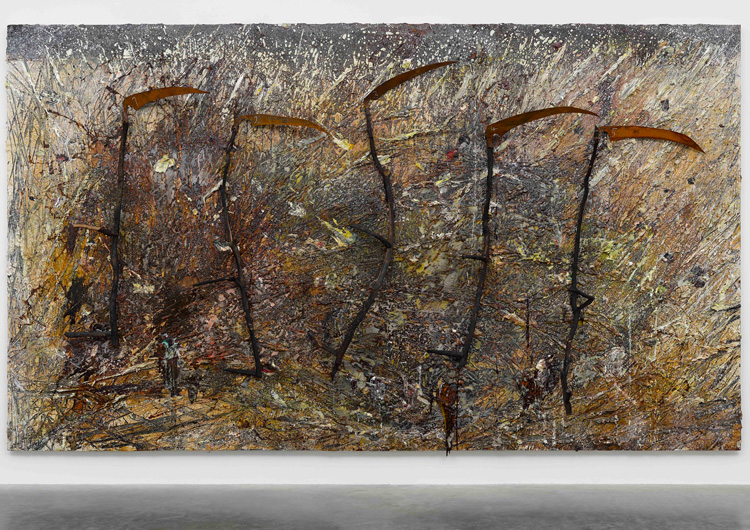
Anselm Kiefer, Vier plus Eins. Emulsion, oil, acrylic, shellac, wood, metal and chalk on canvas, 330 x 570 cm. © Anselm Kiefer. Photo © White Cube (Ollie Hammick).
Its broad themes for 2020 are very much of their time and reflect issues that many contemporary artists are addressing. Identity, migration, borders, ecology, climate change, democracy are all important issues globally that it would be surprising not to see in an exhibition such as this. Of course, the curators of each gallery within the exhibition approached these themes on their own terms and there were a number of things that caught my attention.

Grayson Perry, The American Dream. Etching, 109.6 x 239.8 cm. Grayson Perry & Paragon | Contemporary Editions Ltd, London. Photo: Stephen White & Co.
Isaac Julien curated the first two galleries, which made for a stunning start to the exhibition. In his homage to Okwui Enwezor, who died last year, Julien invited some of the artists whose careers Enwezor influenced. With only 19 works across the two galleries, Julien shunned the “pack ’em in” mode of curation for a pared-back approach that really gives the art room to breathe and the viewer space to look and focus on individual works.
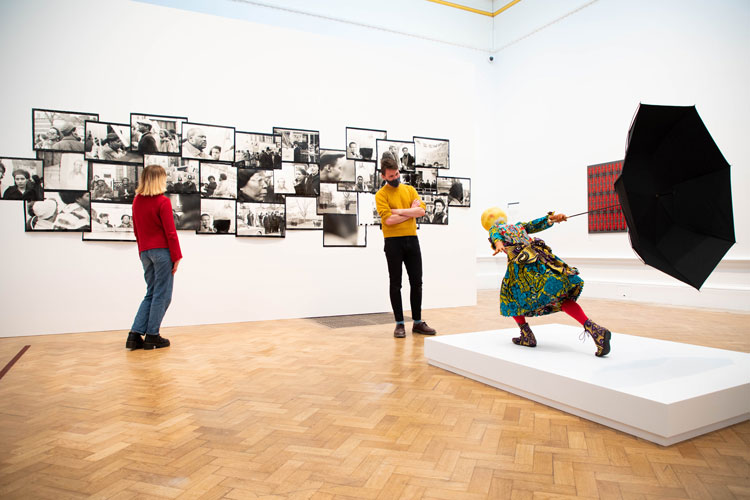
Left: Isaac Julien. Lessons of the Hour, London 1983 – Who killed Colin Roach?; Right: Yinka Shonibare. Air Kid (Girl). Installation view RA Summer Exhibition 2020. Photo: © Royal Academy of Arts / David Parry
There is a dynamism in the first room especially, as the strident stance of Yinka Shonibare’s Air Kid (Girl) propels you across the room to the shimmering flow of Frank Bowling’s Watermelon Bight before turning you back on your heels to catch Julien’s own striking Lessons of the Hour, London, 1983 – Who Killed Colin Roach?
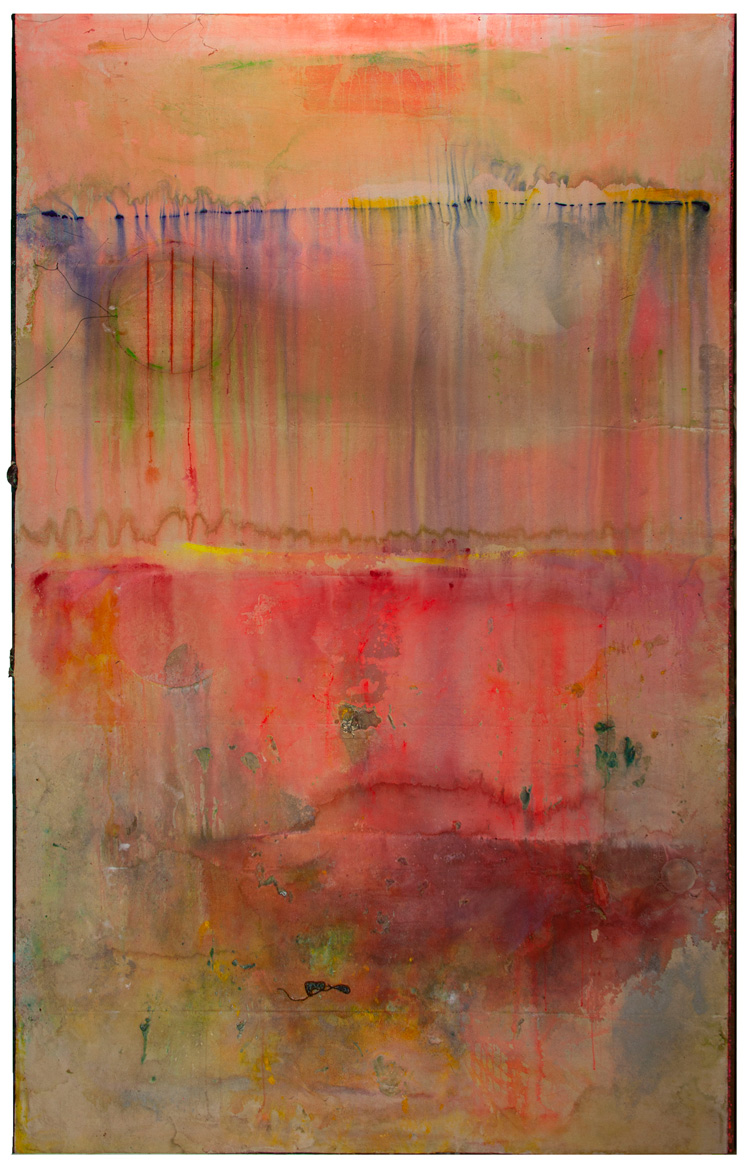
Frank Bowling, Watermelon Bight. Acrylic on canvas, 297.2 x 185.4 cm. © Frank Bowling. All Rights Reserved, DACS 2020.
Gallery IV, curated by Sonia Boyce, has a much quieter feel and many of the artists included here have never exhibited at the Summer Exhibition before. This is not to suggest that the work shown is in any way timid, but it has a reflective feel to it that slows us down. A perfect example is the digital video work Twice by John Smith, an incantation on handwashing, so pertinent to our times. The works in this room don’t shout at the viewer, but the sheer variety on show feels like a quiet celebration of sorts.
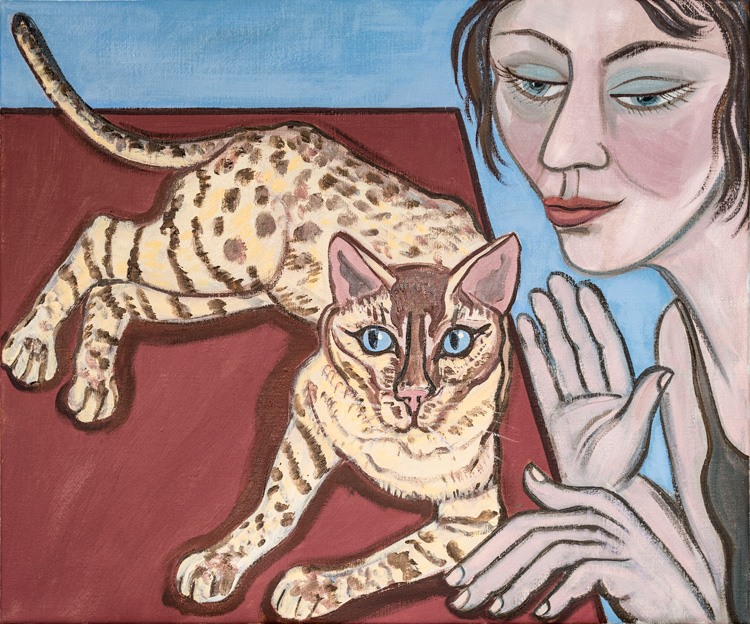
Eileen Cooper, Belong to Cats II. Oil on canvas, 51 x 61 cm. © Eileen Cooper RA. Photo: Malcolm Southward.
I was attracted to the works in Gallery V, one of two curated by Eileen Cooper, for their sense of calm. Cooper’s selection is full of gardens, water and people. The six iterations of Zen Gardens by Jennifer Dickson really are a joy and set the tone for a gallery that takes us from the vastness of the natural world to the more human scale of manmade environments and the intimacy of our face-to-face encounters with one another. Wonderful.
In Gallery VIII, David Remfry’s selections seem to coalesce around themes of the domestic and the figure. There are two works among Remfry’s selection that stood out for me. First, painter Shanti Panchal’s Blue Screen (The Sari) and, second, photographer Nicola Morley’s Grandma on Christmas Day. While visually and conceptually very different, these two works share a thoughtful stillness in the figures they portray while masking something more complicated beneath the surface, a sadness perhaps.
The next gallery, curated by Stephen Farthing, contains the now obligatory works by Bob and Roberta Smith with When Is Cummings Going? insisting on a humorous take on a serious question. It is classic Bob and Roberta. David Austen’s Blue Boy seems like an allegory for our present situation. The stylised figure of a pubescent boy appears with arms outstretched and toes pointing down, as if crucified. With head and eyes lowered, the deep sadness in his face is reflected in the pale translucent blue of his skin, cold against the solid blue background, without hope.
In contrast, the sculpture gallery, curated by Richard Deacon, is a riotous collection of works that lift the spirit. Works by Ann Christopher and Brian Catling caught my eye. Christopher’s Following Lines -7 and Following Lines -8 are interesting because they are essentially sculpture in two dimensions. Catling’s works in this room are also two-dimensional. His prints, Britons, Birdish and A Young Merrick Plays an Old Hurt, are all made of delicate, laser-engraved paper with a soft monochrome pallet and are rather different from his complex, sculptural constructions.
In many ways, the Summer Exhibition 2020 is much the same as it has ever been, certainly in recent years. The range of work is diverse, but there are those artists who always feature. Gone are the shuffling crowds, and the galleries accommodate only a fraction of the usual number of viewers. What has changed most, perhaps, is what we bring to it in present times, how we view the works, and what we take away.